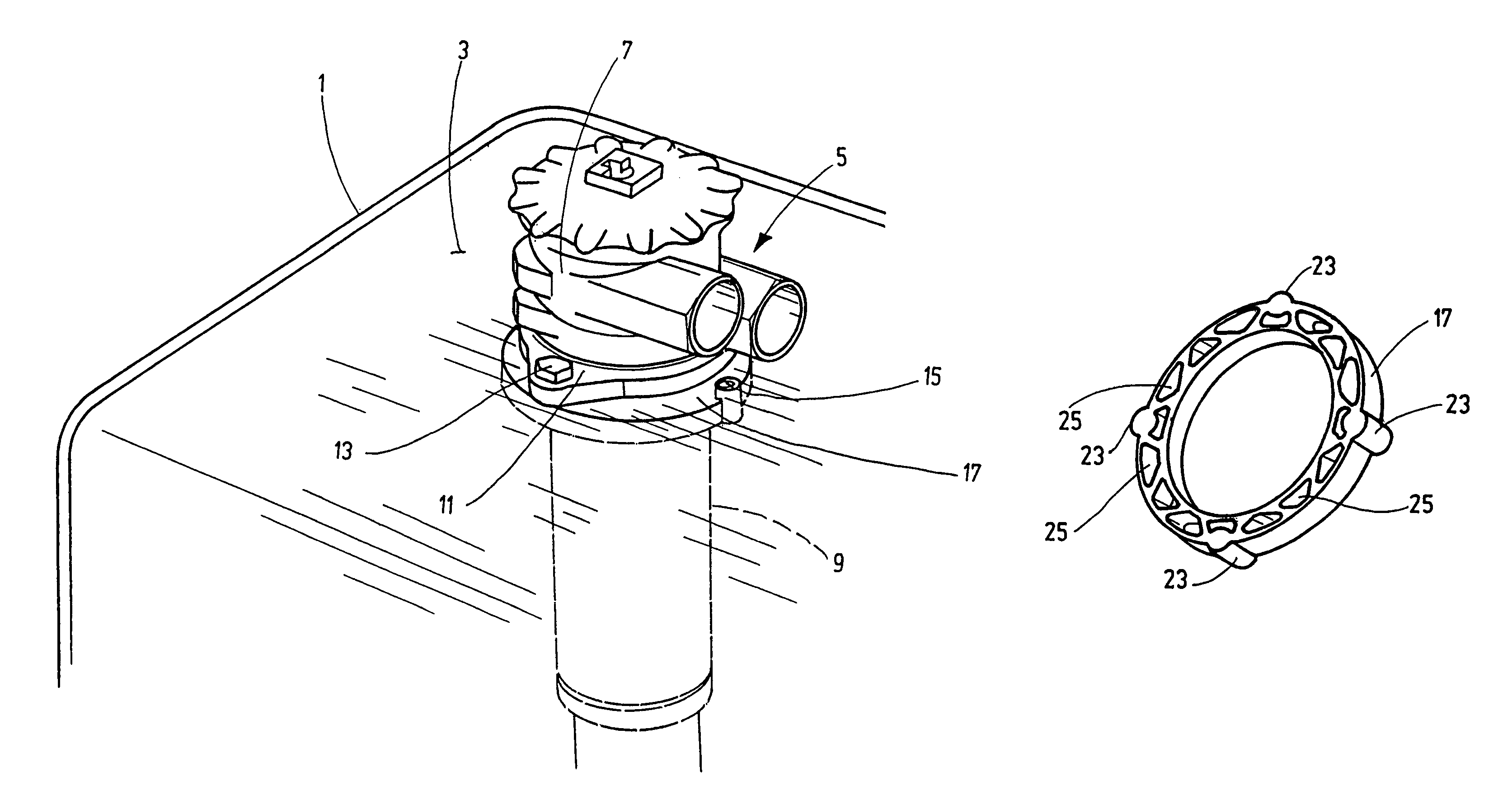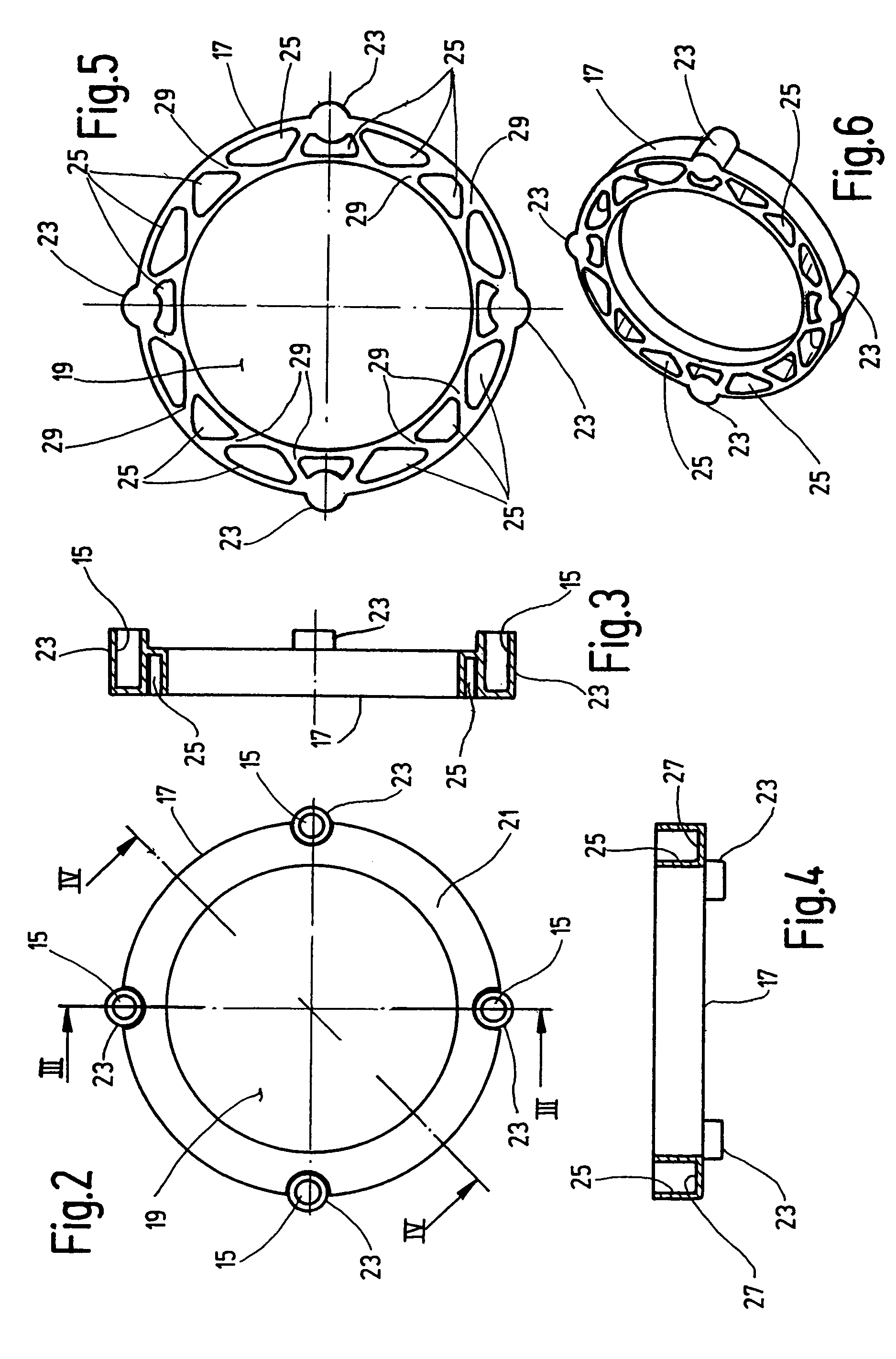Fitting for formation of a fluid-conducting connection
- Summary
- Abstract
- Description
- Claims
- Application Information
AI Technical Summary
Benefits of technology
Problems solved by technology
Method used
Image
Examples
Embodiment Construction
[0020]FIG. 1 illustrates a part of the upper side of a container in the form of a plastic tank 1 made of a plastic material suitable for larger containers by the known rotomolding process (cf. Schaab / Stoeckhert, AKunststoff Maschinenführer@ [Plastic Machine Operator]), pages 561–564). A tank opening is formed on the upper side in the rotomolding process. In the opening in the plastic wall 3, a fitting 5 is provided for a fluid-conducting, leak-free connection to a connecting element represented in the embodiment illustrated by the connecting head 7 of a tank-top filter the filter element 9 projecting through the opening to the interior of the tank 1. The connecting head 7 has a fastening flange 11 mounted on the tank 1 by two retaining screws 13, only one of which is visible in FIG. 1.
[0021]The retaining screws 13 extend through the fastening flange 11, and are screwed into internally threaded blind-end bores 15 provided on a connecting element configured as an annular element 17, a...
PUM
 Login to view more
Login to view more Abstract
Description
Claims
Application Information
 Login to view more
Login to view more - R&D Engineer
- R&D Manager
- IP Professional
- Industry Leading Data Capabilities
- Powerful AI technology
- Patent DNA Extraction
Browse by: Latest US Patents, China's latest patents, Technical Efficacy Thesaurus, Application Domain, Technology Topic.
© 2024 PatSnap. All rights reserved.Legal|Privacy policy|Modern Slavery Act Transparency Statement|Sitemap



